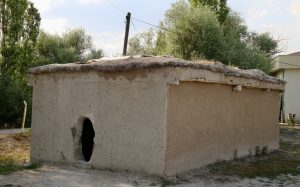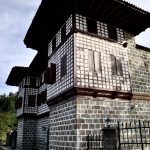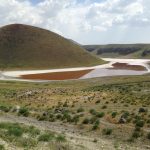Turkey’s oldest town?

The most famous attraction near Konya is probably the Neolithic site and world heritage site at Çatalhöyük (Fork Mound), near the dusty small town of Çumra.
These days the dramatic discoveries at Göbeklitepe, near Şanlıurfa, have stolen some of Çatalhöyük’s thunder but until recently this was one of those mysterious ancient sites that set romantics aquiver as they dreamed of the dim and distant past and the days when the cult of the Mother Goddess prevailed in Central Anatolia.
Actually, modern archeologists are not as convinced as they used to be about that goddess. Turns out much of the mythology arose from one roly-poly statuette recovered from a grain bin into which it could quite possibly have fallen by accidental. But the thing about Çatalhöyük, like so many prehistoric sites, is that hard facts are impossible to come by and in their place come theories that tend to change with the zeitgeist.
If you’ve already visited Ephesus and Aphrodisias you may find Çatalhöyük, now housed beneath a huge shelter, a tad disappointing. Although there’s a small on-site visitors centre and a replica of what archaeologists think the houses excavated from inside the tell (settlement mound) would have looked like, the rest of the site consists of a series of mud-walled holes in the ground that don’t make a lot of sense without an expert to explain them.
Suffice to say that the 9,000-year-old settlement at Çatalhöyük appears to have consisted of homes that were entered from the roofs via ladders, that were designed to a standard plan and that served as burial places for their inhabitants when their days were done (their skeletons were buried beneath benches reminiscent of the sedirs that later adorned Ottoman houses). What might appear to be streets running between the houses were, in fact, large rubbish dumps. Strangely, no public buildings have been identified at the site – no temples, no town halls, no meeting chambers – a fact that on its own makes Çatalhöyük different from other archaeological sites (although it may be that they will come to light in the future).
Excavations have been ongoing since 1961 but still only a tiny part of the site has been uncovered which means that there’s still ample scope for theories about life here to change again. The best of the finds are on display in the Museum of Anatolian Civilisations in Ankara with just a few paltry offerings in the Konya Archaeological Museum.
Scattered across the flat surrounding plain are several other evocative tells that still await excavation.
The biggest problem is getting here without your own wheels. There are infrequent buses southeast from Konya to Kükköy whence you can approach the site on foot (except on Sundays). Alternatively, take a bus to Çumra (33km) and hire a taxi to the site. In a group it might make more sense to hire a taxi in Konya.



